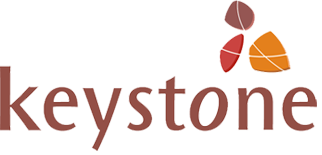 How do you know how your organization is performing? Here at Keystone Accountability we say for a clear indication of how you are doing ask the people you serve. It is these customers, clients, beneficiaries, and other stakeholders, or constituents as we call them, that are best placed to determine the value of your work.
How do you know how your organization is performing? Here at Keystone Accountability we say for a clear indication of how you are doing ask the people you serve. It is these customers, clients, beneficiaries, and other stakeholders, or constituents as we call them, that are best placed to determine the value of your work.
If you repeatedly ask these important constituents the same questions (such as would you recommend this service to a colleague or friend?) you can track your performance over time, to see if things are improving or not. It can also help you understand if changes you have made in response to feedback are having the desired effect or not.
However, it can sometimes be hard to understand your constituent feedback results – are your scores good, bad or somewhere in between? Here is where the power of benchmarks can really help – comparing what your constituents say about you to what the constituents of similar organizations say about them. Keystone seeks to incorporate such benchmarks where ever possible.
For all our standardized tools, including the partnership survey, we offer anonymized benchmarks. You can’t see who is doing better than you but you can see where you come in the ranking. When this positioning information is split by theme you can see clearly in which areas you excel compared to others and where there is still room for improvement. Each time we offer the survey our dataset expands and our benchmarks become richer, and more representative of the field. The wider pool of data gives you better information about how your work compares to the ‘average’. Moreover, benchmarks can be a great stimulus to use the data as a springboard for changes, and can force organizations to engage with findings they might otherwise be tempted to ignore.
 Customized benchmarks are possible – and can be useful for example to compare country offices against each other. Although, they are not always advisable. We have clients who only want to be benchmarked against for example ‘other high profile international organizations’, or other organizations working in the same sector. However, the beauty of anonymized benchmarks is that you are able to compare performance against performance rather than against reputation. It may not be the organizations with the highest profile that perform best. By comparing your performance to a wider selection you are exposed to the best in best practice – indicating what is possible.
Customized benchmarks are possible – and can be useful for example to compare country offices against each other. Although, they are not always advisable. We have clients who only want to be benchmarked against for example ‘other high profile international organizations’, or other organizations working in the same sector. However, the beauty of anonymized benchmarks is that you are able to compare performance against performance rather than against reputation. It may not be the organizations with the highest profile that perform best. By comparing your performance to a wider selection you are exposed to the best in best practice – indicating what is possible.
You don’t need to do one of our performance surveys to benefit from the benchmarks – our online tool the Feedback Commons allows you to send out your own surveys and delivers you the results with benchmarks against our wider dataset. Try it! And see how the power of the benchmark can give you both a better sense of how you are doing now, and how you could do better in the future.
